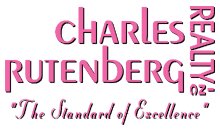I just sent this update to all my clients, with my thoughts regarding flood zones and flood insurance. There’s been a lot of activity around flood insurance regulation nationally in the last year, and I’m finding that sometimes clients decide to avoid flood zones entirely in their search.
But this approach could be a mistake, eliminating a dream home that actually doesn’t present any problem with flood insurance.
Let’s review the major elements that determine the cost of a flood insurance policy, all things to consider before purchase.
- Elevation of the Land above normal water level – obviously a factor, but often the only one people think about, I.e. it’s in a flood zone so forget it.
- The net Elevation of the Property is the determining factor. An elevated home built on 10-foot stilts even in a flood zone has a clear advantage to the underwriter.
- Square Footage of the structure – the more house, the more to insure.
- Type of Construction – e.g. newer buildings tend to have better flood-resisting materials; block construction will hold up better against water than wood frame, etc.
- Age of the property.
- Previous Claims. Insurers will look at the history oif the property foe any earlier issues.
- Degree of Venting is important. What matters in a flood is the surge of water and how quickly the water can flow past your property. With pier and beam construction, the bottom structure will have vents in the walls – this is where the water has to escape through. More vents can be added to help with runoff, so remediation and improvement is possible here.
- Similarly with Break Away Walls, lots of foundations have sections of wall that are not load-bearing and designed to break away under the force of a flood surge. The ratio of square footage to opening of the foundation walls is part of the calculation for insurance.
- Assumability of the current owners policy. If the current policy is government-subsidized, being able to assume it from the seller is probably a lot better than having to write a new policy. Conceivably, you could keep this assumed policy for the life of your ownership of the home.
- The new Home Owners Affordability Act limits the cost of flood insurance premiums to a Fixed Increment (of 15% to 25%) each year. So if you have a policy that is going to rise, this can be calculated. Millions of flood insurance policies across the nation have traditionally been subsidized to even out the national burden. Insurers anticipate rising costs of flood insurance, but the Affordability Act brings stability to this market.
All of these factors come into play with each home listed in a zone that requires flood insurance. Policies for a few hundred dollars per year are still being written all the time today, even here in the water paradise of Florida.
Conclusion – for anyone thinking of looking at property, it pays to keep flood zones in your home search!



